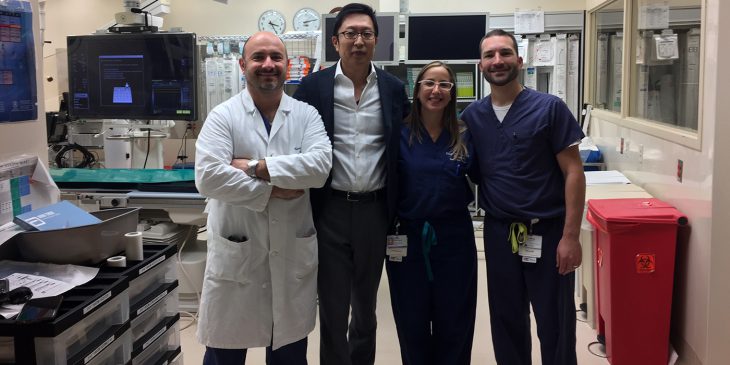Experts from the UPMC Comprehensive Pulmonary Hypertension Program are now using a new procedure aimed at improving the quality of life for chronic thromboembolic pulmonary hypertension (CTEPH) patients who aren’t responding to medication or are ineligible for surgery.
The UPMC CTEPH Program is one of only a few centers across the country to offer balloon pulmonary artery angioplasty (BPA) as a treatment option for CTEPH – a type of high blood pressure caused by chronic blood clots that affects arteries in the lungs and in the heart.
“The UPMC CTEPH Program is a specialized, multidisciplinary team of experts who come together to improve a patient’s survival and quality of life,” said Dr. Belinda Rivera-Lebron, director of the program. “CTEPH is a serious condition that affects our patient population, and this new procedure adds a treatment option for those who previously had very few alternatives.”
For the majority of patients who have suffered a blood clot, blood thinners are used to restore blood flow, which in turn improves breathing and exercise ability. However, in many patients, despite appropriate anticoagulation, their acute blood clots don’t resolve and progress to CTEPH. Others may develop it from multiple small clots over a long period of time, and some develop CTEPH with no history of acute blood clots.
The symptoms of CTEPH are similar to other types of PH: shortness of breath and a limited ability to exercise, according to the Pulmonary Hypertension Association. Other symptoms include a dry cough, chest pain and heart palpitations. As the disease progresses, patients may experience light-headedness or exercise-related dizziness. Abdominal and lower extremity swelling may develop as lung pressures increase and the right ventricle, which pumps blood into the lungs, begins to weaken.
Treatment for the disease includes medication for those ineligible for surgery and pulmonary thromboendarterectomy, a surgery that removes those chronic blood clots from the pulmonary artery.
Dr. Rivera-Lebron, who is also an associate professor of medicine in the University of Pittsburgh’s Division of Pulmonary, Allergy and Critical Care Medicine, and Dr. Catalin Toma, director of interventional cardiology at the UPMC Heart and Vascular Institute and assistant professor of medicine in Pitt’s Division of Cardiology, traveled to the Osaka Cardiovascular Hospital in Japan to learn from one of the world’s leading BPA experts, Dr. Takeshi Ogo.
Last August, the two took part in a proctorship to learn the procedure, and in November, the Japanese doctor visited Pittsburgh to assist in the first cases at UPMC. The team has performed BPAs on three patients to date.
“After evaluating the western Pennsylvania patient population, it was noted that we had a significant number of patients with CTEPH who were not candidates for surgery,” Dr. Toma said. “BPA is now emerging as an alternative for these patients.”
To perform this minimally invasive procedure, a catheter with a balloon at the tip is inserted into the pulmonary artery and inflated to displace the clot. Patients usually require several procedures to achieve improvement.
For more information about BPA or the UPMC CTEPH Program, call 877-744-8768 or visit http://www.upmc.com/Services/pulmonary-hypertension.









